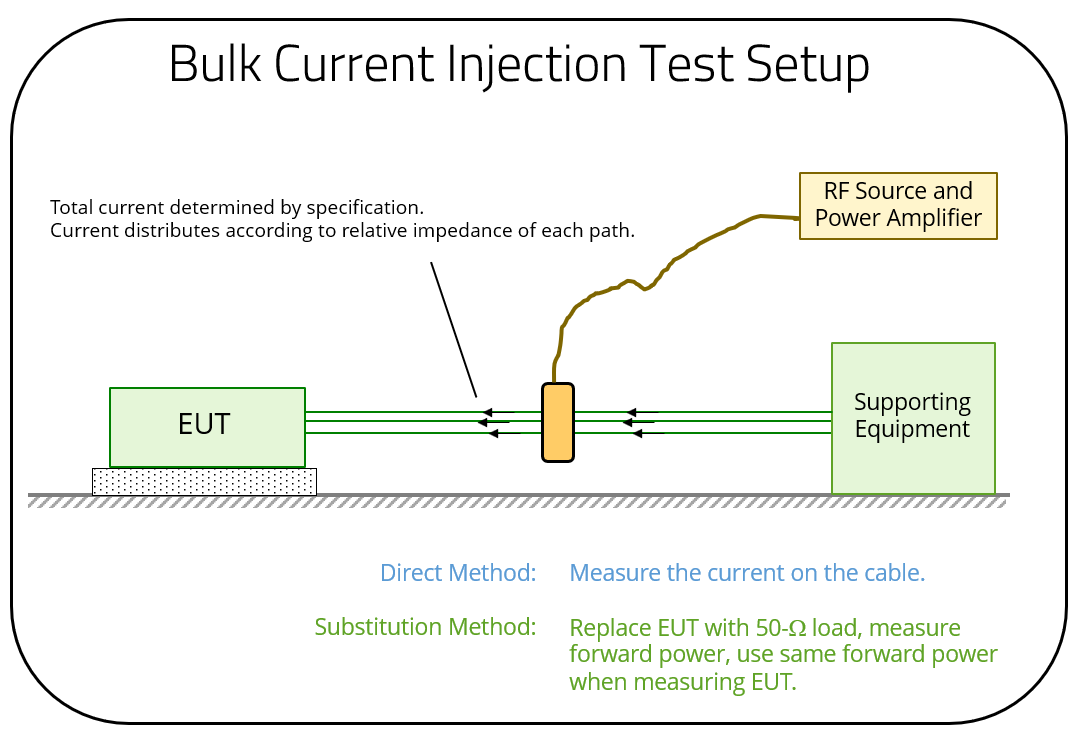EMC Question of the Week: March 8, 2021

When a bulk current injection (BCI) test is performed on a wire harness, which induced-noise quantity is approximately the same on every wire in the harness?
- voltage
- current
- power
- all of the above
Answer
The best answer is “a.” A bulk current injection probe induces the same voltage in each wire at the probe location. The amount of current injected, depends on the impedance of the circuit formed by that wire and its specific terminations. Wires in the harness that have lower-impedance terminations to the table-top at both ends will carry a higher percentage of the total current.
Essentially, the current injection probe behaves like an N:1 transformer, where N is the number of wire turns around the probe's ferrite core. Each wire passing through the probe behaves like a 1-turn secondary winding. The probe steps the voltage down and the current up. Viewed from the harness wires, the probe is a very low-impedance source (i.e. a voltage source). The magnitude of the induced voltage in each wire is ωMI, where ω is the angular frequency, M is the mutual inductance between the primary and secondary of the probe, and I is the current in the primary.
It's important to note that the distribution of the currents induced in the harness wires is a function of the impedances at both ends. This means that the wire terminations at the end of the harness with the supporting equipment can be just as important as the termination impedances in the device under test.
Have a comment or question regarding this solution? We'd like to hear from you. Email us at
